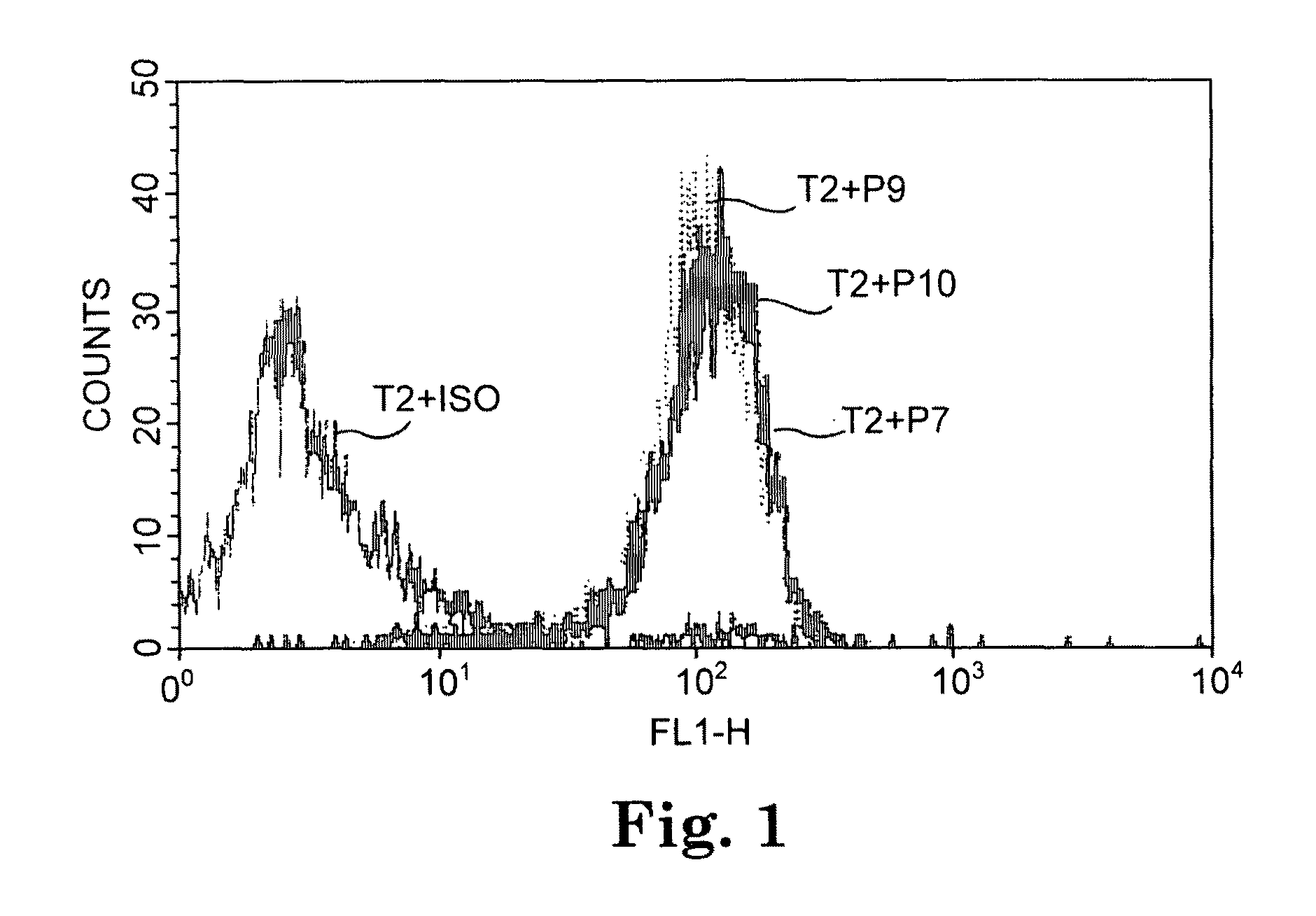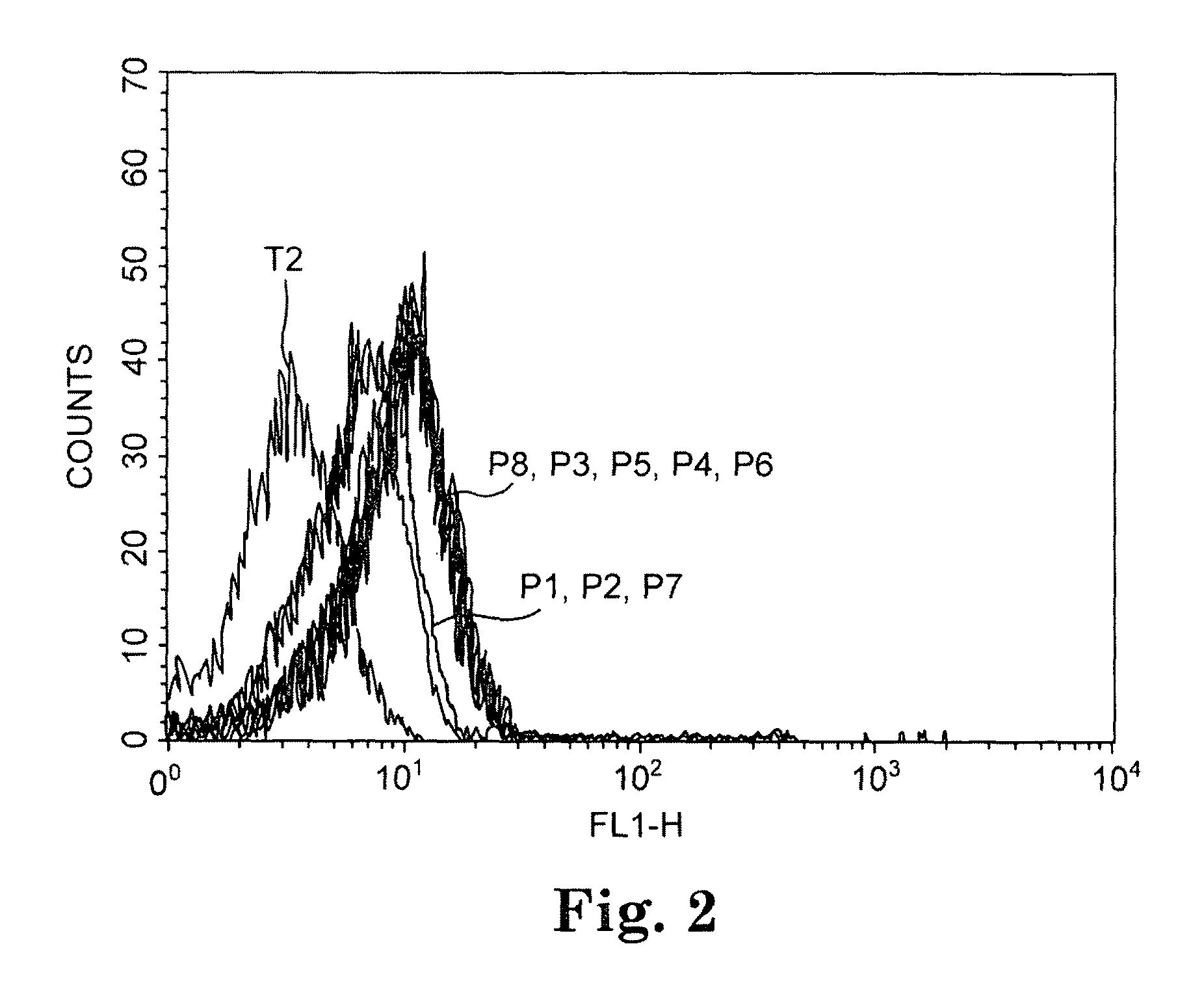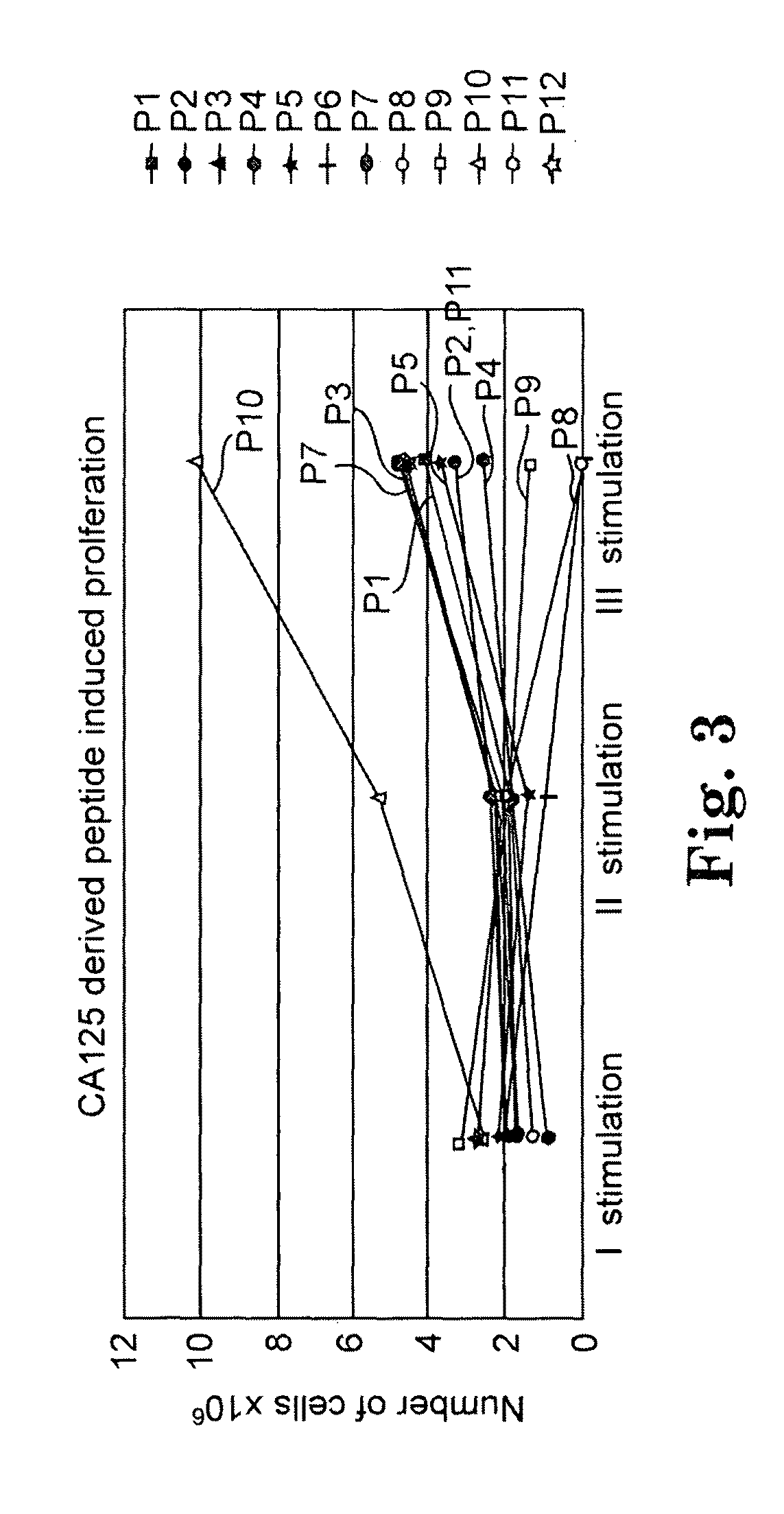Target CA125 peptides for cancer immunotherapy
a cancer immunotherapy and target ca125 technology, applied in the field of target ca125 peptides for cancer immunotherapy, can solve the problems of inability to obtain sufficient amounts of tumor antigen from a patient for the development of dc-based immunotherapy against the patient's own tumor in many cases, and the extent to which general conclusions can be drawn from these observations for active immunization of cancer patients remains only partially established
- Summary
- Abstract
- Description
- Claims
- Application Information
AI Technical Summary
Benefits of technology
Problems solved by technology
Method used
Image
Examples
example 1
Selection of CA125 Peptides
[0076]The multiple repeat domain of the CA125 sequence, residues 12070 to 21868 of CA125 (GenBank Accession Number AAL65133) was processed using the BIMAS algorithm of the Center for Information Technology, NIH, (web address: bimas.dcrt.nih.gov / molbio / hla_bind) to identify candidate peptides predicted to bind to the most abundant HLA class I cell surface protein (3). The website allows calculation of binding affinity to different HLA proteins. Since HLA A*0201 is represented in approximately half the population, binding was calculated to that HLA molecule. Twelve CA125 9-mer or 10-mer peptides with strong predicted binding to HLA A*0201 were selected for further testing (Table 3). In Tables 3 and 4, one amino acid in the peptide sequence is lower case. For peptides longer than 9 amino acids, the algorithm to calculate binding affinity postulates that one amino acid in the middle of the peptide bulges out, and this amino acid is not used to calculate affini...
example 2
Selection of TADG-12 Peptides
[0078]The TADG-12 (Tumor Associated Differentially Expressed Gene 12) protein sequence (SEQ ID NO:21) (1) was processed using the BIMAS algorithm of the Center for Information Technology, NIH, (web address: bimas.dcrt.nih.gov / molbio / hla_bind) to identify candidate peptides predicted to bind to the most abundant HLA class I cell surface protein (3). The website allows calculation of binding affinity to different HLA proteins. Since HLA A*0201 is represented in approximately half the population, binding was calculated to that HLA molecule. Eight TADG-12 9-mer and 10-mer peptides with strong predicted binding to HLA A*0201 were selected for further testing (Table 4).
[0079]
TABLE 4TADG-12No.PEPTIDESofBIMASPeptide IDHLA A-0201AASCOREP1 TADG12 / 9AQLGFPSYV9545.316(SEQ ID NO: 13)P2 TADG12 / 9LLPLKFFPI9195.448(SEQ ID NO: 14)P3 TADG12 / 10SLLPIKFFPI10425.387(SEQ ID NO: 15)P4 TADG12 / 10LLPDdKVTAL10342.461(SEQ ID NO: 16)P5 TADG12 / 10YLPKsWTIQV10319.939(SEQ ID NO: 17)P6 TADG...
example 3
CA 125 Peptide Binding to HLA A*0201 on T2 Cells
[0080]Peptide binding assays were conducted with the TAP-deficient T2 cell line using the 12 CA 125 peptides of Table 3. Ten out of the 12 CA125 peptides predicted to have a long half life of binding to HLA A*0201 by the BIMAS computer algorithm significantly increased cell expression of A*0201, as determined by flow cytometric analysis. The results with three representative peptides are shown in FIG. 1.
PUM
| Property | Measurement | Unit |
|---|---|---|
| total volume | aaaaa | aaaaa |
| total volume | aaaaa | aaaaa |
| pH | aaaaa | aaaaa |
Abstract
Description
Claims
Application Information
 Login to View More
Login to View More - R&D
- Intellectual Property
- Life Sciences
- Materials
- Tech Scout
- Unparalleled Data Quality
- Higher Quality Content
- 60% Fewer Hallucinations
Browse by: Latest US Patents, China's latest patents, Technical Efficacy Thesaurus, Application Domain, Technology Topic, Popular Technical Reports.
© 2025 PatSnap. All rights reserved.Legal|Privacy policy|Modern Slavery Act Transparency Statement|Sitemap|About US| Contact US: help@patsnap.com



